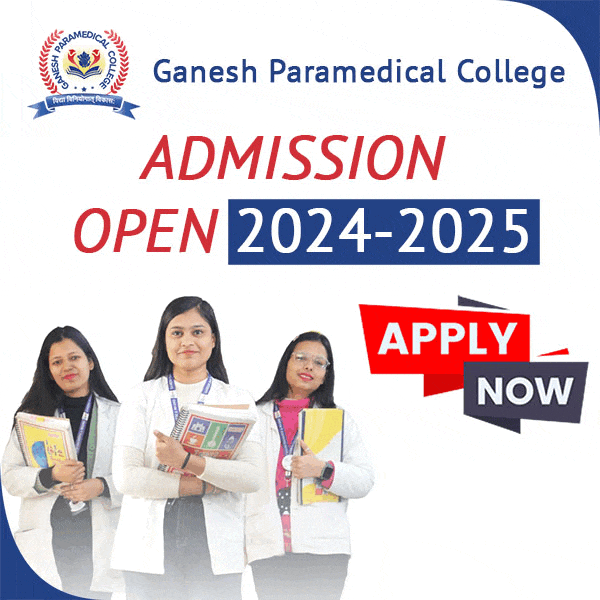
This blog explores the causes, diagnosis, and treatment options for APLA Syndrome, highlighting the importance of early diagnosis and proper management. If you're looking for the best APLA Blood Test in Delhi NCR, Ganesh...
Antiphospholipid syndrome (APS), also referred to as APLA Syndrome. It is an autoimmune disorder characterized by hypercoagulability that significantly increases thrombotic risk.
This condition can precipitate life-threatening complications including cerebrovascular accidents and presents substantial risks during pregnancy.
As with other autoimmune pathologies, APS involves dysregulation of immune function resulting in self-directed antibody activity.
Pathophysiology
The fundamental mechanism underlying APS involves aberrant antibody production targeting phospholipid-binding proteins. These autoantibodies interact with proteins bound to phospholipids by destabilizing their structure and promoting thrombotic aggregation. Three specific autoantibodies have been implicated in APLA Syndrome pathogenesis:
- Lupus anticoagulant
- Anticardiolipin antibodies
- Anti-β2 glycoprotein 1 antibodies
Patients may present with one, two, or all three autoantibodies. Despite the identification of these causative agents, the precise immunological trigger initiating autoantibody production remains incompletely understood. Current research suggests potential roles for genetic predisposition, environmental factors, and molecular mimicry in APLA Syndrome.
The presence of these autoantibodies initiates a cascade of events involving endothelial cell activation, platelet aggregation, complement activation, and inhibition of natural anticoagulant mechanisms.
This multifactorial process creates a prothrombotic environment within the vasculature, predisposing affected individuals to thrombotic events in venous and arterial circulatory systems.
Clinical Manifestations
Most patients with APS remain asymptomatic until experiencing a thrombotic event or obstetric complication. A minority of patients may exhibit livedo reticularis, characterized by a mottled, lace-like cutaneous pattern resulting from impaired microcirculation leading to follow further APLA Blood Test.
- Thrombotic Manifestations
- Acute thrombotic events may present with:
- Pleuritic chest pain
- Dyspnoea
- Recurrent cephalgia
- Acute extremity or axial pain
- Localized erythema or oedema
- Abdominal discomfort
The location and extent of thrombosis determine the specific clinical presentation. Deep vein thrombosis typically manifests as unilateral limb pain, swelling, and erythema. Pulmonary embolism presents with sudden-onset dyspnoea, tachypnoea, and pleuritic chest pain. Cerebrovascular events may manifest as focal neurological deficits, altered mental status, or seizure activity.
- Laboratory Abnormalities
- Subclinical manifestations often include:
- Thrombocytopenia
- Anaemia
- Cardiac valvular abnormalities
These laboratory abnormalities may be incidental findings during routine examinations or may present with associated clinical symptoms such as fatigue, exertional dyspnea, or cardiac murmurs.
Epidemiology and Risk Factors
APS can affect individuals of any demographic, though certain factors confer increased susceptibility:
- Female sex predominance (female-to-male ratio approximately 5:1)
- Peak incidence between 30-40 years of age
- Concurrent autoimmune disorders (particularly systemic lupus erythematosus or rheumatoid arthritis)
- A positive family history suggests a genetic contribution.
- APS is classified as either primary (occurring in isolation) or secondary (associated with another autoimmune condition). Secondary APS is particularly common in patients with systemic lupus erythematosus, with approximately 30-40% of lupus patients demonstrating antiphospholipid antibodies.
Complications
APS-associated thrombosis can affect multiple vascular beds with severe consequences:
Major Thrombotic Complications
- Cerebrovascular thrombosis resulting in stroke
- Coronary thrombosis
- Pulmonary embolism
- Renal thrombosis
- Deep vein thrombosis
- Portal vein thrombosis
- Budd-Chiari syndrome (hepatic vein thrombosis)
- Retinal vein thrombosis
The distribution of thrombotic events in APS demonstrates significant heterogeneity, with approximately 70% involving venous circulation and 30% affecting arterial vessels. Recurrence rates for thrombotic events remain substantial, with 10-year recurrence rates estimated at 30-40% despite appropriate anticoagulation therapy.
Obstetric Complications
- Pregnancy loss due to placental insufficiency
- Increased preeclampsia risk
- Intrauterine growth restriction
- Preterm delivery
- Placental abruption
- HELLP syndrome (haemolysis, elevated liver enzymes, low platelets)
The pathogenesis of obstetric complications involves thrombotic microangiopathy affecting placental vasculature, resulting in impaired uteroplacental circulation and subsequent foetal compromise.
Catastrophic Antiphospholipid Syndrome
A rare but critical variant is catastrophic antiphospholipid syndrome (CAPS), characterized by rapid multi-organ thrombosis developing within days. CAPS carries approximately 50% mortality and affects less than 1% of APS patients. Precipitating factors for CAPS include infections, surgical procedures, medication changes, and pregnancy.
Diagnostic Approach
APS diagnosis typically follows the investigation of unexplained thrombosis or pregnancy complications. The condition requires laboratory confirmation through specialized testing.
Diagnostic Criteria
Definitive diagnosis requires:
Positive testing for at least one antiphospholipid antibody
Confirmation with repeat testing after a minimum three-month interval
Clinical manifestations (thrombosis or specific pregnancy morbidity)
Laboratory assessment should include testing for all three antiphospholipid antibodies, as some patients may exhibit positivity for only one antibody type. False positive results may occur during acute infections or with certain medications, necessitating confirmation testing after an appropriate interval.
Therapeutic Management
Treatment strategies focus on preventing thrombotic events through anticoagulation therapy:
Anticoagulant Interventions
Heparin: Intravenous administration for acute thrombotic episodes
Warfarin: Oral anticoagulant for long-term prophylaxis, typically targeting INR 2.0-3.0
Aspirin: Adjunctive therapy for arterial thrombosis prevention
Direct oral anticoagulants (DOACs): Emerging evidence suggests potential efficacy in selected patients
Selection of an anticoagulant regimen depends on thrombotic history, comorbidities, and pregnancy status. Duration of therapy varies based on risk stratification, with indefinite anticoagulation typically recommended for patients with recurrent thrombosis or high-risk antibody profiles.
Obstetric Management
Pregnant patients with APS may require:
Enoxaparin: Subcutaneous low-molecular-weight heparin, often combined with low-dose aspirin
Intravenous immunoglobulin: Provides immunomodulation and infection protection
Corticosteroids: Reduces inflammatory response and immunosuppression
Hydroxychloroquine: Emerging evidence suggests benefit in refractory cases
These therapeutic interventions are considered safe during pregnancy for both maternal and fetal outcomes. Multidisciplinary management involving rheumatology, haematology, and maternal-fetal medicine specialists optimizes pregnancy outcomes.
Monitoring and Precautions
Anticoagulation therapy requires vigilant monitoring for haemorrhagic complications. Concerning signs warranting immediate medical attention include:
- Spontaneous gingival or nasal haemorrhage
- Menorrhagia
- Hematemesis or coffee-ground emesis
- Haematochezia or melena
- Abdominal or severe cephalic pain
- Acute visual disturbances
- Focal neurological deficits
Regular laboratory monitoring of anticoagulation parameters is essential for patients receiving warfarin therapy. INR testing frequency depends on the stability of anticoagulation control and medication adjustments.
Nutritional Considerations
Standard dietary recommendations apply to most APLA Syndrome patients. Those on warfarin therapy should maintain consistent vitamin K intake, avoiding significant fluctuations in the consumption of leafy green vegetables. Alcohol consumption requires moderation due to potential interaction with anticoagulant medications. Educational resources regarding dietary considerations should be provided to all patients initiating anticoagulation therapy.
APLA Diagnosed the Right Way!
Despite its serious complications, APS remains a manageable condition with appropriate medical intervention. Most patients maintain normal lifestyles including the possibility of successful pregnancies with specialized obstetric care.
Are you seeking one of the best APLA Blood Test in Delhi NCR?
Ganesh Diagnostic and Imaging Centre Pvt. Ltd. provider consultation, compliance with medication regimens, and prompt attention to warning signs optimize long-term outcomes in this chronic autoimmune disorder.
Ongoing research continues to elucidate pathogenic mechanisms and develop targeted therapeutic approaches for this complex condition.












